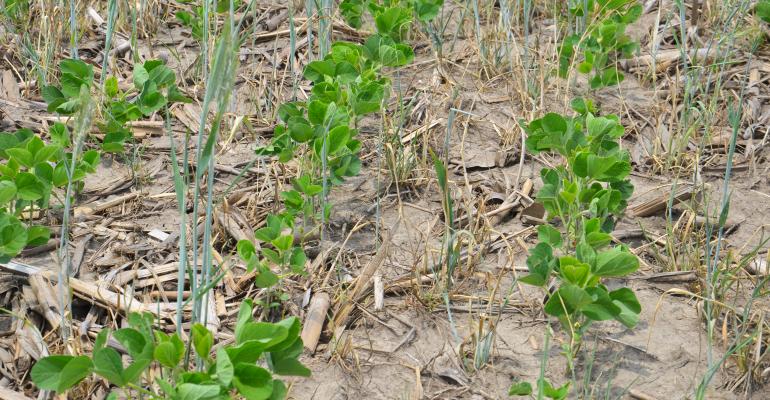Tackle marestail with cereal rye this fall

Soybean Pest Beat: Here’s what you need to know to make cereal rye planted ahead of soybeans an effective form of weed control.
Aug 13, 2018
I will go with cereal rye ahead of soybeans in 2019. What are my options for seeding it? Which do you prefer? What rate do you recommend for cereal rye? One of my goals is to reduce marestail pressure next spring. Should I add any other cover crop species to the mix?
The Indiana certified crop adviser panel answering this question includes Betsy Bower, agronomist, Ceres Solutions Cooperative, Lafayette; Steve Gauck, sales agronomist, Beck’s, Greensburg; and Dan Ritter, agronomist, Dairyland Seed, Wabash.
Bower: There are several options for seeding cereal rye following corn. Drilling is my preferred method for all cover crops; broadcast-apply aerially by airplane or helicopter or with a crop nutrient spinner-spreader, or seed with a spreader mounted on a combine or vertical-tillage unit.
To reduce marestail pressure, your seeding rate will need to be much higher than if you plan to reduce soil erosion only. Drilling is preferred for quicker emergence to start competing with marestail. Seeding rates need to be in the range of 60 to 90 pounds per acre to effectively compete with marestail. Double-down on marestail by applying a fall mix of dicamba and 2,4-D once cereal rye gets two to three leaves.
I don’t think you need another cover crop species to help compete with marestail. There are some recommendations to mix barley or wheat with cereal rye to keep the whole field from getting so tall in the spring. You can still apply dicamba and 2,4-D to kill fall-emerged marestail and provide a little residual control into spring.
Gauck: Cereal rye has lots of seeding options because of its ability to grow in cooler temperatures. I prefer any seeding method that gives you good seed-to-soil contact. Drilling is the best option, especially when seeding into corn residue.
You can normally successfully drill cereal rye into mid-November. Rates vary. If you’re buying from a good source with high germination, drilling at 35 pounds per acre is normally enough to reduce marestail pressure. If you’re broadcasting or using an aerial application, you’ll need 40 to 50 pounds per acre.
If you have heavy marestail pressure, drill 40-plus pounds per acre the first year. Early establishment helps the most in marestail control. If you want to break up soil compaction, adding rapeseed at about 1 pound per acre will help.
Ritter: Aerial seeding rates will be significantly higher, and drilling will be the lowest. The seeding rate doesn’t have to be as high as if this was a production field of rye. For direct seeding with a drill, rates are in the range of 40 to 90 pounds per acre. Broadcast-seeding with light incorporation are at 55 to 100 pounds acre, and aerial seeding is 60 to 110 pounds per acre.
To assist in marestail control, try to get a robust stand established as soon as possible. I would not be opposed to adding another species. I would suggest a mixture that complements each other.

